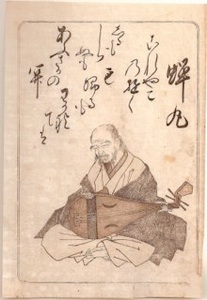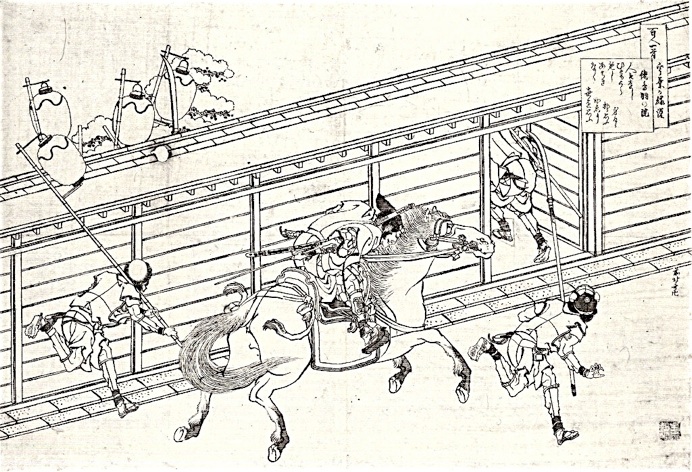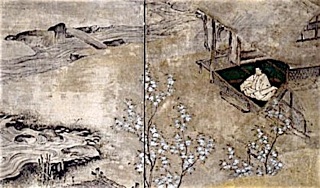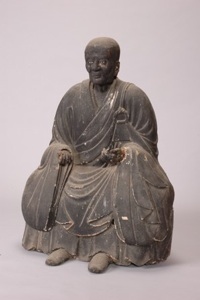後鳥羽院御製


人も惜し
人も恨めし
あぢきなく
世を思ふゆゑに
もの思ふ身は
ごとばいん
ひともおし
ひともうらめし
あじきなく
よをおもうゆえに
ものおもうみは
Emperor Gotoba
Some men deserve pity,
Some men deserve hate;
Lamenting this woeful world
Is reason enough
To worry about myself.
Hokusai
Gotoba-In (1180 - 1239), (In meaning ‘retired’), from 1183 to 1198, still a child, but it was a formal rule. He was named after emperor Toba, so he became Go-Toba, the later Toba. In 1198 the shogun forced Gotoba to abdicate. The power of succeeding emperors was very limited. In 1221, the shogun installed Gotoba’s three-year-old grandson, Chukyo, as emperor, but Gotoba staged a rebellion, known as the Jokyu war, in an attempt to reclaim the throne and overthrow the Kamakura shogunate. Gotoba’s rebellion was defeated and a new emperor was installed by the shogunate. Gotaba was exiled to the Oki Islands. During his reign his palace, the Minase Rikyu, was in Shimamoto, north-east of Osaka, where he now is an enshrined deity at the Minase shrine that was erected there.
He is known as a swordsmith, calligrapher, painter, musician, poet, critic, editor and principal of poetry anthologies. He commissioned the Shin Kokinshu (the backslash at the end of poems indicates the poems marked for deletion by him), which he also edited and revised during his exile; he removed nearly 400 poems from the anthology. While working on the Shin Kokinshu some differences of opinion arose with Teika.
There are 254 poems by him in imperial collections. Juntoku (poem 100) was his son.




Screen with exiled emperor on Oki

Statue of Gotoba
This poem was written in 1212, and refers to the Kamakura shogunate, which kept the emperors powerless.
Hokusai shows us a man on horseback, a samurai apparently, making great haste at night, lighted by some servants or soldiers. It is not clear whether he is entering or leaving. It is indicative of the turbulence of the times. Maybe the drawing has a deliberately introduced uncertainty of what is depicted, forcing us to ask ‘what is happening here?’
